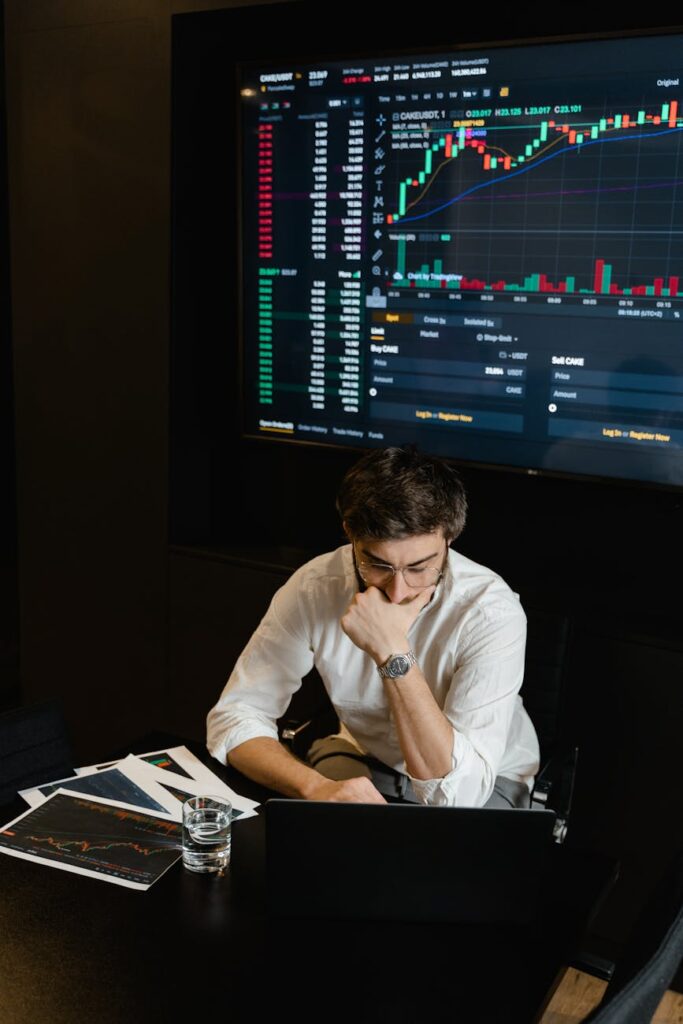The Seductive Lie of the Guaranteed High Return
You’ve seen them. They pop up in your social media feeds, slide into your DMs, or get mentioned by a friend of a friend who’s suddenly a financial guru. They are investment platforms promising the moon: massive, consistent, and—most importantly—guaranteed returns. 1% a day. 20% a month. Double your money in 90 days. It’s a tantalizing offer, a potential escape route from the daily grind, a fast track to financial freedom. But here’s the cold, hard truth: the promise of a guaranteed high return is almost always the bait on a hook, and you’re the fish they’re trying to catch.
Investing, by its very nature, involves risk. The potential for higher returns is inextricably linked to higher risk. It’s a fundamental law of finance. Anyone who tells you otherwise isn’t selling an investment; they’re selling a fantasy. A very expensive fantasy. This isn’t about being cynical; it’s about being smart, protecting your hard-earned money, and understanding the dangerous psychology behind these schemes. So, before you transfer a single dollar to that slick-looking platform with the flashy testimonials, let’s pull back the curtain on this pervasive and destructive myth.
Key Takeaways
- Risk and Reward are Linked: Legitimate investments always carry risk. High potential returns always come with high potential risk. There’s no such thing as a free lunch in finance.
- “Guaranteed” is a Massive Red Flag: The word “guaranteed” in the context of high returns should set off immediate alarm bells. Only very low-return products like government bonds or insured savings accounts can offer guarantees.
- Scammers Exploit Psychology: These platforms prey on hope, fear of missing out (FOMO), and financial desperation. They create a sense of urgency and exclusivity to bypass your critical thinking.
- Due Diligence is Non-Negotiable: Always verify a platform’s registration, understand the underlying investment strategy, and be skeptical of overly complex or secretive explanations. If you can’t understand it, don’t invest in it.
The Alluring Siren Song of “Guaranteed” Returns
Why are these promises so effective? It’s simple. They tap directly into our deepest financial desires and anxieties. We all want financial security. We dream of paying off debt, buying a home, traveling the world, or retiring comfortably. A regular 9-to-5 job can feel like a slow, arduous path to those goals. Then, along comes a platform that says, “Hey, you can skip all that. You can get there in a fraction of the time. And don’t worry, it’s a sure thing.”
Why Guarantees and High Returns Don’t Mix
Think about how the real financial world works. The stock market, the source of significant wealth for many, has good years and bad years. The S&P 500, a benchmark for the US market, has an average annual return of about 10% over the long term, but in any given year, it can be up 30% or down 20%. There are no guarantees. Companies can fail. Economies can enter a recession. Global events can tank markets overnight. A legitimate investment manager’s job is to navigate this uncertainty, not pretend it doesn’t exist.
So when a platform promises a guaranteed high return, like 25% a month, you have to ask a critical question: how? How are they generating these returns with zero risk in a world where even the most brilliant financial minds cannot? The answer is, they aren’t. Not legitimately, anyway. The “guarantee” isn’t based on a revolutionary trading algorithm or exclusive access to a secret market. It’s based on a lie.
The Psychology Behind the Pitch
Scammers are masters of psychological manipulation. They don’t sell financial products; they sell hope. They create an illusion of an exclusive club that has found the secret to wealth. They use social proof—fake testimonials, doctored screenshots of account balances, and glowing reviews from early “investors” (who are often part of the scam or have been paid off with money from newer victims). This creates a powerful sense of FOMO. You see others supposedly getting rich and think, “I need to get in on this before it’s too late!” This emotional response is exactly what they want, as it short-circuits the logical, cautious part of your brain.

Red Flags: How to Spot a “Guaranteed High Return” Scam
Luckily, these scams, while sophisticated in their psychological tactics, often follow a predictable script. Learning to recognize the warning signs is your best defense. If you see any of these, don’t just walk away. Run.
- The Promise is Too Good to Be True: This is the oldest and truest cliché for a reason. If a platform promises returns significantly higher than market averages (again, think 10-12% annually for stocks over the long haul) and calls them “guaranteed” or “risk-free,” it’s a scam. Full stop.
- Pressure Cooker Tactics: Scammers create a false sense of urgency. You’ll hear phrases like “This is a limited-time offer,” “Spaces are filling up fast,” or “Get in now before the price goes up.” They do this to rush you into making a decision before you have time to do your research or consult with a trusted advisor. Legitimate investment opportunities don’t need to pressure you.
- Vague or Overly Complex Strategies: When you ask how they generate their incredible returns, you’ll get one of two answers. Either it’s incredibly vague (“We use proprietary AI trading bots and arbitrage strategies”) or impossibly complex, filled with jargon designed to confuse and intimidate you into not asking further questions. If they can’t explain their process in simple terms, it’s because the process isn’t real.
- Unlicensed and Unregistered: This is a big one. In most countries, companies and individuals who offer and sell investments must be registered with a financial regulatory body (like the SEC in the United States or the FCA in the UK). Scammers will either operate without these licenses or claim to be registered in an obscure offshore location with lax regulations. You should always be able to independently verify their registration on the regulator’s official website.
- Flawless Track Record and Questionable “Proof”: They’ll show you slick charts where the returns only ever go up. No dips, no downturns, just a perfect upward trajectory. Real markets don’t work like that. They’ll also provide testimonials, but these are easily faked. Anyone can pay for a positive video review or create a fake social media profile to sing a platform’s praises.
- Difficulty Withdrawing Funds: This is often the final, painful sign. In the beginning, they might let you withdraw a small amount to build your confidence. But when you try to pull out your principal investment or a large chunk of your “profits,” you’ll suddenly face delays, excuses, unexpected fees, or complete silence. By then, it’s too late.
“The four most dangerous words in investing are: ‘This time it’s different’. When it comes to guaranteed returns, it’s never different. It’s always a trap.”
Real-World Examples of Schemes Gone Wrong
This isn’t just theoretical. History is littered with the financial wreckage of these schemes.
The most infamous example is Bernie Madoff. He promised steady, attractive returns to his wealthy clients for decades. He wasn’t offering an outlandish 1% a day, but a very appealing (and seemingly plausible) 10-12% per year, every year, like clockwork. The problem? He wasn’t making any trades. He was simply taking money from new investors to pay the “returns” of earlier investors. It was the world’s largest Ponzi scheme, and when it collapsed in 2008, it wiped out an estimated $65 billion, devastating families, charities, and foundations.
A more recent example from the crypto world is BitConnect. It promised astronomical returns through a supposed trading bot and a lending program. It used a multi-level marketing structure to encourage recruitment, creating a frenzy. Users saw their on-screen balances skyrocket. But it was all an illusion. When regulators closed in and new money dried up, the platform collapsed in a matter of days in 2018, and its token’s value plummeted over 90%, erasing billions of dollars of investors’ money.

The Anatomy of a High-Yield Investment Program (HYIP)
Many of these scams are structured as High-Yield Investment Programs, or HYIPs, which are almost always Ponzi schemes. Understanding the mechanics is crucial.
Imagine a scammer, let’s call him Dave, starts a platform called “Dave’s Daily Dollars.” He promises a 1% daily return, guaranteed.
- Investor A is intrigued and invests $1,000.
- The next day, Dave updates Investor A’s account to show $1,010. This money didn’t come from any investment; Dave just typed it into the website.
- Investor B sees Investor A’s “success” and invests $5,000.
- Now Dave has $6,000 in cash. When Investor A wants to withdraw his $10 profit, Dave simply pays him from Investor B’s money. Investor A is thrilled and tells everyone how great the platform is.
- More investors (C, D, and E) pour in money based on the hype. Dave uses their money to pay the “profits” to the earlier investors.
This can continue as long as new money coming in is greater than the money being paid out. The platform looks successful, and the early investors are happy. But it’s a house of cards. The moment new investments slow down, or a large number of investors try to cash out at once, the entire structure collapses. Dave disappears with the remaining cash, and everyone who hadn’t already cashed out loses everything.
Due Diligence: Your Financial Self-Defense Kit
So, how do you protect yourself? By doing your homework. It takes time, but it can save you from financial ruin.
- Check Registration and Licensing: Don’t just take their word for it. Go to the website of the relevant financial regulator (e.g., the SEC’s IAPD database in the U.S.) and search for the company and the individuals behind it. If you can’t find them, it’s a massive red flag.
- Scrutinize the Paperwork: Legitimate investment firms have extensive documentation—prospectuses, offering memorandums, client agreements. These documents will clearly outline the investment strategy, the risks involved, the fees, and more. Scam platforms usually have flimsy, unprofessional documents or none at all.
- Ask the Hard Questions: Contact their support. Ask pointed questions. How exactly do you generate returns? What is your risk management strategy? Who is the custodian of the funds? Where is your company physically located? If their answers are evasive, vague, or nonsensical, you have your answer.
- Search for Independent Reviews: Don’t just rely on the testimonials on their website. Do a deep dive on Google, Reddit, and Trustpilot. Look for negative reviews and complaints. Search for the platform’s name plus words like “scam,” “fraud,” or “withdrawal problems.” One glowing review is easy to fake; a pattern of complaints is hard to ignore.
- Understand the Investment Itself: If they claim to be trading crypto, do you understand how that works? If they mention forex, do you know the risks? Never invest in something you don’t fundamentally understand. This is a core principle of sound investing championed by legends like Warren Buffett.

What If You’ve Already Invested?
If you’re reading this and feeling a pit in your stomach because you’ve already put money into one of these platforms, take a deep breath. First, try to withdraw your money immediately. Don’t reinvest your “profits.” Attempt to pull out both your initial capital and any supposed gains. If you meet resistance, you know it’s a scam. Document everything: every transaction, every email, every chat log. Then, report the platform to the relevant financial regulators and law enforcement agencies in your country. While recovering funds can be difficult, reporting them can help prevent others from falling into the same trap.
Legitimate High-Return Strategies (and Their Inherent Risks)
To be clear, the goal isn’t to avoid all risk and settle for 0.1% interest in a savings account. It’s about understanding and managing risk intelligently. High returns *are* possible, but they are never, ever guaranteed. Legitimate avenues for potentially high returns include:
- Individual Stocks: Investing in a single growth stock can lead to massive returns, but that company could also fail, wiping out your entire investment.
- Venture Capital/Angel Investing: Investing in startups offers huge upside potential, but the vast majority of startups fail. It’s extremely high-risk.
- Leveraged Real Estate: Using leverage to buy property can amplify gains, but it also amplifies losses if the market turns.
- Cryptocurrencies: While some have seen life-changing gains, the crypto market is notoriously volatile, and assets can lose 80-90% of their value in a short period.
The key difference? Anyone selling you these legitimate investments will be legally required to tell you, in no uncertain terms, about the significant risks involved. They won’t use the word “guarantee.”
Conclusion
The dream of quick, easy, and guaranteed wealth is a powerful one, but it’s a dream that financial predators have used to drain life savings for centuries. The tools and platforms may have changed—from letters and phone calls to slick websites and social media—but the underlying lie remains the same.
There is no secret. There is no magic algorithm. There is no risk-free path to a 50% annual return. Your greatest asset in the world of investing isn’t a hot tip or access to an exclusive platform; it’s a healthy dose of skepticism. When you encounter the promise of a guaranteed high return, remember that you’re not being offered an opportunity. You’re being targeted. Protect yourself, protect your future, and invest in real strategies, not in costly fantasies.
FAQ
Are all platforms that offer high yields scams?
Not necessarily, but the devil is in the details. A platform might offer a high-yield product based on a legitimate but very high-risk strategy, like crypto staking or DeFi lending. A reputable platform will be transparent about these risks, explaining that the high yield is a reflection of the high risk of volatility or platform failure. The problem arises when a platform markets high yields as being “safe,” “risk-free,” or “guaranteed.” That’s the line between a high-risk investment and a probable scam.
What is a realistic annual return on investment?
This depends entirely on the asset class and the risk you’re willing to take. A diversified portfolio of global stocks has historically returned an average of 7-10% per year over long periods, though it can vary wildly year-to-year. Government bonds are much safer but might only yield 2-5%. Real estate returns vary by location and strategy. Anything promising consistent, guaranteed returns above 15-20% per year should be viewed with extreme suspicion, and claims of monthly or daily returns in the double digits are almost certainly fraudulent.


